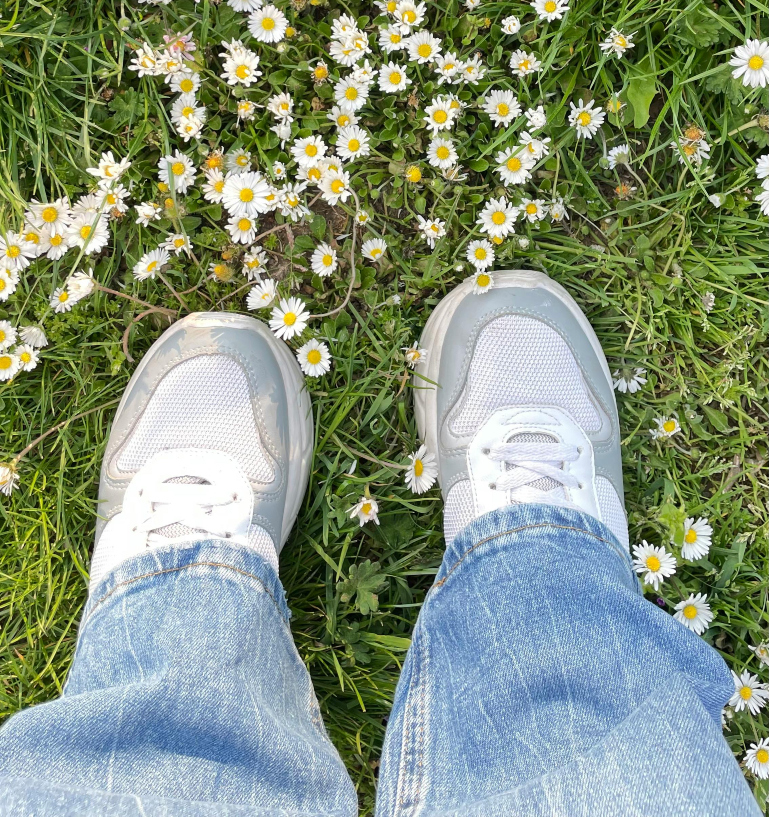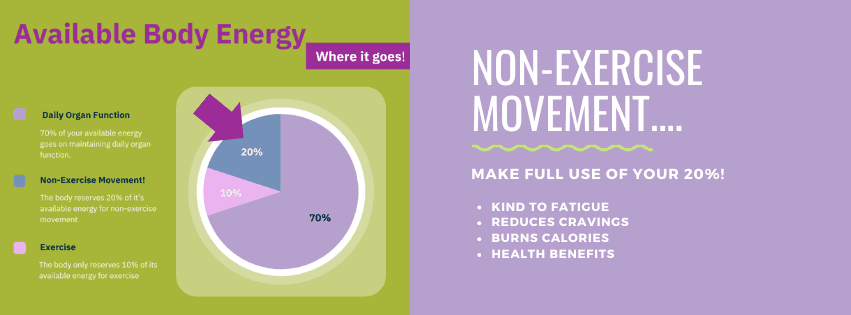Join this simple 28-day chewing challenge and unlock better digestion, enjoy food more, and experience easy weight loss!
This powerful self care practice is a breeze, simply chew your food more.
Do you remember a voice from your childhood telling you to chew your food properly? Well turns out it was right!
The benefits are really quite amazing from such a little practice.
I hope you will join me for this fun, simple but effective self care challenge.
Do you need this chewing challenge?
Wondering if simply chewing your food could help your wellbeing?
Here are some signs that you could benefit from the chewing challenge.
- You struggle to control your food portions (eat large portions)
- You want to release some weight without completing changing your diet
- You eat too quickly, never really taste your food
- Often feel too full after eating
- You suffer with heartburn and acid reflux (GERD)
- You suffer with bloating, burping and gas
- You suffer with dental issues, gum disease, issues with your jaw.
- Nutritional deficiencies such as low in Iron, B vitamins, Magnesium.
- You suffer with Low hydrochloric acid symptoms such as fatigue, indigestion and undigested food in stool
If you recognise any of the above, then this chewing challenge is worth exploring!
*** These are the areas of your health to assess, by describing and scoring, before and after the challenge.
Jump to RecipeIt all started with Being Young at 60 by Horace Fletcher
I am a huge fan of the ‘Old Time Healers’ who were the real lone pioneers of self care long before the internet. And Horace Fletcher is one.
Horace Fletcher published a book in 1913 called ‘Flecterism: What it is and how I became young at 60’.
In summary his answer to easy weight loss and vitality at 60 was to chew, chew, chew your food. I find it fascinating that American Presidents, British Prime Ministers, J.H Kellogg and even King Edward VII reportedly took up Fletcherism.
Don’t worry I did check and there is some modern research to back up this 100 year old bestseller, here, here and here
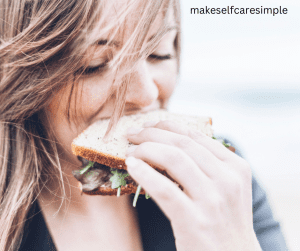
Benefits of Chewing Your Food more
It always helps to understand why it’s worth making the effort with self care, so here are the benefits of chewing your food.
- Chewing is the first step in Digestion
Chewing stimulates nerves to tell the stomach, gallbladder and pancreas that food is coming so go get ready! This signal alerts the stomach to produce enough hydrochloric acid to digest food.
- Chewing Produces more Saliva
Saliva contains all sorts of goodies that help your digestion to break down carbs and fat, a lubricant to bind food together and make swallowing easier. Also your mouth is a hot-bed of nasty bacteria and the more you chew the more saliva you produce which is full of antimicrobials which clean your mouth…
- Problem with Food that is not chewed properly
When you don’t chew your food, large particles of food are swallowed and this causes stomach bacteria to multiply and ferment in order to break down these larger particles of food so they can be digested. Excess stomach bacteria causes all sorts of havoc with your digestion such as bloating, gas, indigestion and constipation.
This is all made worse because when you don’t chew the stomach does not get a signal to produce enough hydrochloric acid which makes it difficult for the stomach to digest your food and this also causes indigestion and means the stomach cannot extract nutrients.
Whew! Your body is amazing.
Eating Less with the Chewing Challenge
Chewing makes you eat slower.
And when you eat slower you give your digestion a chance to signal to the brain that it is full. Many of us stuff our faces whilst being entertained by social media, work or TV (I do anyway) and then feel uncomfortably full.
This means you (and me) are mindlessly eating – we pay no attention to what we are eating and before we know it the food is all gone!
It’s the same with comfort eating – you get triggered and that bar of chocolate is gone before you can register its pleasure
What I like about this weight-loss hack is that instead of restricting yourself, the idea is that you eat slower, chew more and increase and prolong the pleasure of the food you are eating.
Honestly I am not sure that chewing more would make me eat less chocolate BUT I do think it would restrict my portion size on everyday meals.
Also slow eating and really paying attention to the taste sensation could stop you from reaching for another biscuit.
What do you think? Worth a exploring this challenge?
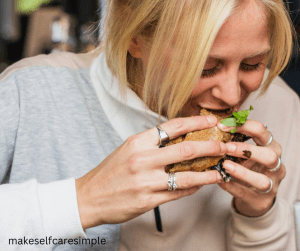
How to do the chewing challenge
In the clinic I found that chewing every single mouthful until liquid was problematic for many of my clients.
It just wasn’t doable.
However if you want to explore chewing every single mouthful until liquid I have no doubt that your results could be amazing! Please let me know how you get on.
Quick note
I have come across chewing for 30 x each mouthful – but the truth is that some foods are softer and easier to chew until liquid than others. So the challenge is to chew until liquid.
The 28-day chewing challenge.
- Assess and score your body before you start the challenge.
- Chew the FIRST mouthful of every meal until liquid.
- Take a moment to really focus on the food –
- How would you describe the taste/flavour?
- Complete the challenge (below)
- Assess and score your body and well-being after you completed the challenge.
- For week 1 chew the first mouthful of every meal.
- For week 2 chew the first two mouthfuls of every meal.
- For week 3 chew the first three mouthfuls of every meal.
- For week 4 chew the first four mouthfuls of every meal.
Don’t forget to track your daily progress this helps you stay motivated
Also you may wish to set some kind of reminder so you don’t forget.
Invite friends to join you!
Don’t forget you can sign up and receive free support! HERE
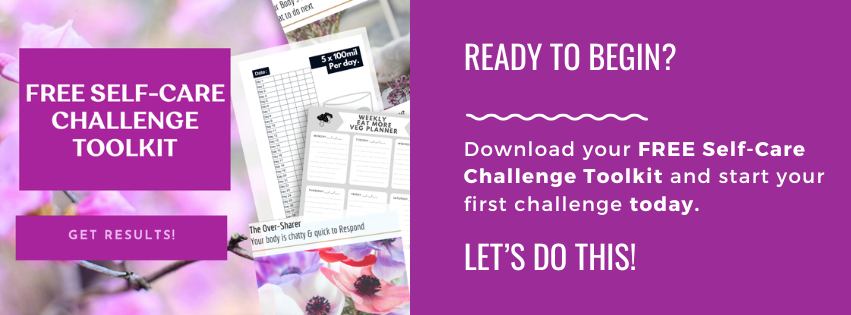
Chewing Challenge Tips
Here are some well-known tips for eating better.
- Make it easier by only chewing the first mouthful for the full 28-days.
- Eat small bites that take less time to chew and slow you down.
- Do not drink liquid or take another bite until you have swallowed
- Sit in a relaxed environment
- Do not eat when stressed, angry or sad
After 28 days
This is when you compare your assessment scores.
Where has the chewing challenge made a difference?
Did you eat less? Bloat less? Slow down and enjoy your meals more?
What made this challenge difficult? How did you overcome any hurdles?
Didn’t see any changes? To see if you should repeat the challenge or move on to something else CLICK BELOW.
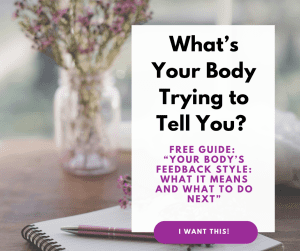
Conclusion
Well done! Congratulations on completing your Chewing Challenge; Boost Flavour, reduce Bloat and Eat less.
Know that if you decide to repeat the challenge or make it part of your regular Menu of Self care practices that your results will continue to improve
You don’t have to figure it out alone. My FREE Self-Care Challenge Toolkit is here to guide you through your first challenge and help you see results faster.
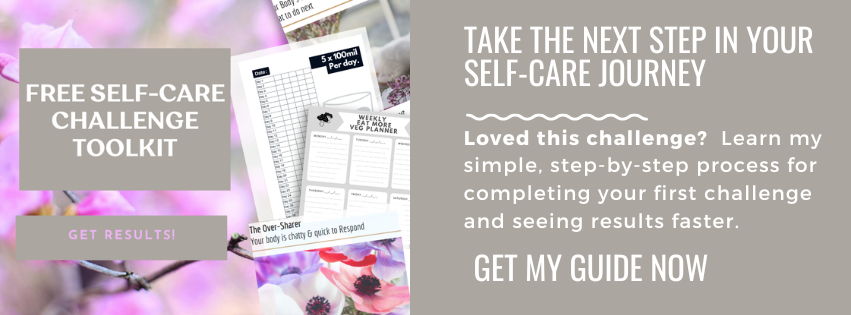
Make Self Care Simple shares general self-care education for inspiration only. I’m not providing medical advice — always check what’s right for you with a qualified health professional.
©2025 Make Self Care Simple.
Save or Print a handy ‘summary’ of this challenge in the ‘Recipe’ below.
28-Day Chewing Challenge; Reduce Bloat, Taste More and Eat Less
Notes
- Assess and score your body before you start the challenge. Read HERE
- Chew the FIRST mouthful of every meal until liquid.
- Take a moment to really focus on the food –
- How would you describe the taste/flavour?
- Complete the challenge (below)
- Assess and score your body and well-being after you completed the challenge.





